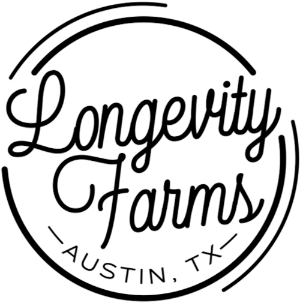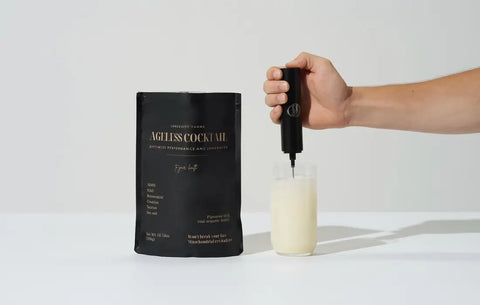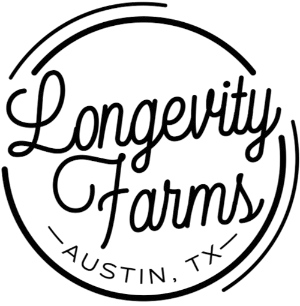Aging is characterized by a gradual accumulation of cellular damage, especially damage to our DNA. Over time, DNA lesions from sources such as UV radiation, toxins, and normal metabolic processes accumulate and can overwhelm the body’s repair systems. This link between DNA damage and aging has led scientists to investigate interventions that might enhance DNA repair and promote healthier aging. One promising area of research is NAD⁺ (nicotinamide adenine dinucleotide) metabolism and its impact on DNA repair. In particular, NMN supplementation (using nicotinamide mononucleotide, a precursor to NAD⁺) has gained attention for its potential to support the cell’s natural DNA repair machinery.

DNA Damage and Aging: Why Repair Matters
Every cell in our body faces a daily onslaught of DNA damage, resulting from environmental factors such as radiation and pollution, as well as internal stresses, including reactive oxygen species produced during metabolism. If not properly repaired, this damage accumulates, leading to mutations, cellular dysfunction, or cell death. Research in gerontology has long highlighted that genomic instability is a key factor in the aging process. The DNA repair aging relationship is crucial: organisms that more effectively repair DNA tend to age more slowly, whereas those with compromised repair systems show accelerated aging. Individuals with hereditary defects in DNA repair genes often experience premature aging and an increased risk of age-related diseases, underscoring the importance of maintaining robust DNA integrity.
Enhancing DNA repair capacity could improve cell viability and function in older organisms. The connection between DNA repair and aging is evident in many animal studies: model organisms with upregulated DNA repair pathways often exhibit extended lifespans or improved health spans. Maintaining DNA integrity through efficient repair is not just about preventing cancer and genetic diseases – it is also about staving off the degenerative processes of aging itself.
Cellular DNA Repair Mechanisms and Challenges
Cells have evolved a network of DNA repair mechanisms to fix different types of damage. These include base excision repair, nucleotide excision repair, mismatch repair, and double-strand break repair. Each of these pathways involves numerous enzymes and proteins that detect DNA damage, signal its presence, and initiate the repair process.
While these repair systems are remarkably effective, they face challenges, especially as we age. DNA repair proteins can become less efficient or less abundant in older cells. Accumulated damage can overwhelm the repair capacity. Moreover, some repair processes themselves can introduce errors if the template is damaged. The result is that aging cells tend to have more mutations and chromosomal abnormalities. Enhancing the fidelity or activity of repair pathways is an area of keen interest for scientists aiming to reduce age-related genomic instability. This is where cellular biochemistry comes into play in bolstering the repair processes.
NAD⁺ – The Fuel for DNA Repair Enzymes
NAD⁺ is a vital coenzyme found in all living cells, famous for its role in energy metabolism (helping convert nutrients into cellular energy). Beyond metabolism, NAD⁺ is also a critical resource for certain DNA repair supplements within the cell. Specifically, enzymes that fix DNA rely on NAD⁺ as a substrate or cofactor. Two important families of NAD⁺-dependent DNA repair enzymes are the PARPs and the sirtuins.
Poly(ADP-ribose) polymerases (PARP1 and PARP2 in particular) detect DNA single-strand breaks and initiate repair by adding long chains of ADP-ribose onto themselves and other proteins. They boost NAD for repair by consuming NAD⁺ to form these ADP-ribose chains as a signal for recruiting DNA repair proteins. In this process, PARP enzymes use up NAD⁺ molecules; if DNA damage is extensive, overactivation of PARP can significantly deplete a cell’s NAD⁺ stores. Sirtuins, on the other hand, are a family of NAD⁺-dependent deacetylase enzymes that influence many aspects of aging and stress resistance. Sirtuins, such as SIRT1 and SIRT6, play a crucial role in maintaining genome stability. SIRT1 can modulate factors involved in DNA break repair and cell cycle checkpoints, while SIRT6 is directly involved in repairing double-strand breaks and maintaining telomere integrity. Every time sirtuins carry out a reaction, they consume NAD⁺ and produce nicotinamide as a byproduct.
Because NAD⁺ is finite in cells, a decline in NAD⁺ availability means these repair-related enzymes may not function at full capacity. Unfortunately, NAD⁺ levels naturally fall as part of the aging process. Studies show that by middle age, organisms have significantly less NAD⁺ in tissues compared to their young counterparts. Several factors contribute to this NAD⁺ decline, including increased activity of NAD⁺-consuming enzymes. The decrease in NAD⁺ is problematic for DNA maintenance: low NAD⁺ can impair PARP-mediated DNA repair and sirtuin activity, thereby exacerbating the accumulation of DNA damage.
NMN Supplementation and NAD⁺ Restoration
One of the most direct ways to raise cellular NAD⁺ levels is by supplying the body with NAD⁺ precursors – molecules that the body can readily convert into NAD⁺. NMN (nicotinamide mononucleotide) is one such precursor that has gained prominence. NMN is a small molecule naturally found in our cells and some foods, and it lies just one step away from NAD⁺ in the metabolic pathway. By taking NMN as a supplement, we can effectively increase the raw material available to make NAD⁺, thereby boosting the cell’s NAD⁺ pool.

For consumers, NMN is available in various supplemental forms (capsules, powders, even beverage mixes). For instance, Longevity Farms offers an NMN vitality drink, providing a convenient way to incorporate NMN into one’s daily routine. Such products aim to effectively boost NAD for repair processes and support overall cellular health. The idea is that by restoring NAD⁺ through supplementation, we provide our cells with the necessary fuel to perform maintenance tasks that keep DNA and other cellular components in good condition. Indeed, many people interested in longevity are turning to NMN for cellular health benefits, reporting improvements in energy levels and recovery.
Scientific Research and Experimental Evidence
A growing body of experimental research, particularly in animal models, has shed light on the tangible effects of NMN supplementation on DNA repair, aging, and cellular resilience to DNA damage. One of the most influential studies in this area was led by researchers at Harvard Medical School, who investigated how boosting NAD⁺ levels with NMN could impact DNA repair mechanisms in mice. In their experiments, both young and old mice were given NMN in their drinking water for a week. The results were striking: older mice, which naturally had lower NAD⁺ levels and reduced activity of DNA repair proteins, such as PARP1, experienced a significant restoration of NAD⁺ to levels seen in younger animals. This increase in NAD⁺ was accompanied by enhanced PARP1 activity, a reduction in the harmful interaction between PARP1 and the inhibitory protein DBC1, and, most importantly, a measurable decline in molecular markers of DNA damage. These findings suggest that NMN supplementation can rejuvenate the cell’s natural repair machinery, counteracting some of the age-related decline in DNA maintenance.
Other Promising DNA Repair Supplements
There is growing interest in a range of supplements that repair DNA or support the body’s DNA repair capabilities. Many of these work indirectly by reducing the sources of DNA damage or by providing necessary cofactors for repair enzymes. Among the best DNA repair supplements, NAD⁺ precursors like NMN (and its close cousin nicotinamide riboside, NR) are often highlighted due to their direct role in cellular metabolism and repair. However, several other nutritional compounds are worth mentioning:
-
Antioxidant vitamins and minerals: Oxidative stress is a significant contributor to DNA damage. Vitamins C and E, for instance, help neutralize free radicals that can strike DNA. Additionally, minerals such as zinc and magnesium are essential as cofactors for DNA polymerases and other repair enzymes, meaning these enzymes require these minerals to function properly. Ensuring adequate intake of these micronutrients can help improve the baseline efficiency of DNA repair and reduce ongoing damage.
-
Polyphenols and plant compounds: Certain plant-derived molecules (such as resveratrol found in red grape skins, EGCG from green tea, and curcumin from turmeric) have been studied for their DNA-protective effects. Resveratrol, for example, is often cited as one of the best supplements for DNA repair support because it can activate sirtuin enzymes (specifically SIRT1) in a manner that mimics calorie restriction, a known enhancer of cellular repair pathways. While these polyphenols are not DNA repair enzymes per se, they influence cell signaling pathways that govern stress resistance and repair.
-
Other NAD⁺ boosters: Niacin (vitamin B3) and nicotinamide (niacinamide) are basic vitamins that the body can use to make NAD⁺. They have been available as supplements for decades. Niacin has the downside of causing flushing in high doses, and nicotinamide can inhibit sirtuins if it accumulates, because it is a form of vitamin B3 that competes at sirtuin active sites as a byproduct. NR (nicotinamide riboside) is another NAD⁺ precursor supplement, often compared to NMN. Both NR and NMN appear effective at increasing NAD⁺, though NMN is one step closer to NAD⁺ in the synthesis pathway. Some people interested in longevity take NR or NMN along with other co-factors as part of a stack of DNA repair supplements aimed at optimizing cellular function.
-
Dietary nucleotides and peptides: Emerging research is exploring small peptides that might signal cells to initiate repair, or nucleotides (the building blocks of DNA) in the diet that might support repair.
When considering the best NMN DNA repair supplements, it’s important to remember that synergy is key: a combination of approaches might work better than any single pill. Reducing oxidative stress with antioxidants can decrease the burden of damage, while NAD⁺ boosters like NMN can increase the capacity to repair whatever damage does occur.
Lifestyle Strategies to Improve DNA Repair Naturally
While supplements can be beneficial, there are also powerful lifestyle approaches that can naturally enhance DNA repair. Our everyday habits have a profound impact on how well our bodies cope with DNA damage. One of the simplest examples is regular exercise: exercise activates the body’s stress responses beneficially. In response to moderate exercise, cells often increase their production of natural antioxidants and repair enzymes.
Another crucial factor is sleep. During deep sleep, especially, the body ramps up repair processes across many systems. Recent research in animal models has shown that sleep facilitates the repair of DNA damage that accumulates in neurons during waking hours. In essence, sleep is the time when our brain and body perform maintenance, patching up DNA and clearing out damaged cells. Chronic sleep deprivation, on the other hand, is associated with increased DNA breakage and reduced expression of some repair genes, which over time could contribute to aging and neurodegeneration. Thus, prioritizing a good night’s sleep is a natural strategy for DNA care.
Diet and avoiding toxins are also key. A balanced diet rich in fruits and vegetables provides not only vitamins and antioxidants but also various bioactive compounds that can support DNA repair enzymes. Foods high in polyphenols (berries, green tea, cruciferous vegetables) may activate some of the same pathways as the supplements mentioned earlier. Conversely, minimizing exposure to known DNA-damaging agents, using sunscreen to block UV radiation, and avoiding excessive alcohol will reduce the burden of damage that needs repair in the first place.

NMN has emerged as a star candidate in this arena. By boosting NAD⁺ levels, NMN amplifies the cell’s natural repair toolkit, energizing processes that tend to falter with age. The anti-aging benefits of DNA repair are not merely theoretical; studies in model organisms demonstrate that better DNA maintenance can translate to improved healthspan and even extended lifespan. While we await more data from human studies, the NMN benefits for longevity observed in animals have made NMN one of the most talked-about molecules in the longevity world.
Sources
-
López-Otín et al., Cell (2013) – “The Hallmarks of Aging”
-
Rajman et al., Cell Metabolism (2018) – “NAD+ Boosting Confers Health Benefits”
-
ScienceDaily (2021) – “SIRT6 protein doubles lifespan in mice by enhancing DNA repair”
-
Healthline – “Top Supplements for DNA Repair and Healthy Aging”




